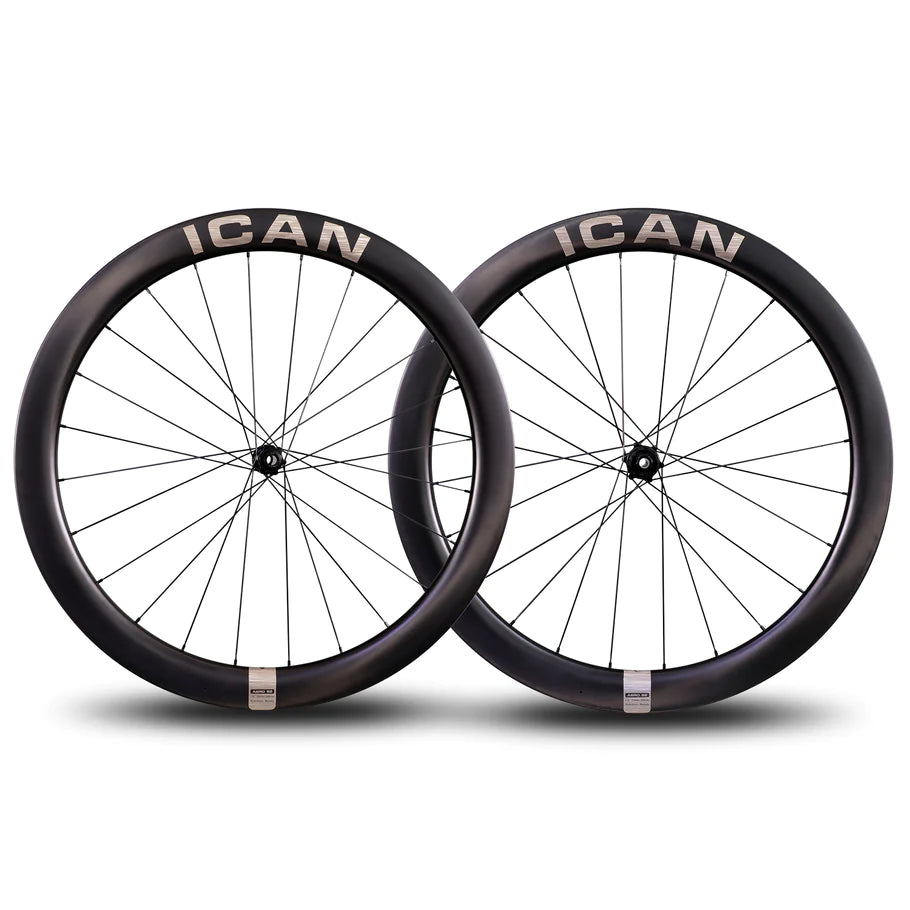If you notice a UCI-approved stamp on ICAN wheels, you may be curious about what it means or who the UCI is. In this guide, we will explain what the UCI is and what they do.
After discussing the UCI in detail, we will explain the benefits of having a UCI certification and provide information on where to find their certification details. Finally, we will provide a useful guide to which of our carbon fiber wheels have a UCI certificate.
What Is The UCI?
The Union Cycliste Internationale is the global governing body for all cycling disciplines. From its headquarters in Aigle, Switzerland, it oversees the national cycling federations worldwide. The organization was established on June 14, 1900, to replace the International Cycling Association (ICA).
The change was made because various other countries were upset that Britain could send teams from all its home nations under the ICA rules. The voting rules were also interesting.
In the past, votes were allocated to velodromes. If a country was a UCI member but had no velodrome, it had no voting rights. However, if a country had 18 velodromes, like France, it had 18 votes. The UCI is responsible for cycling in the Olympics and used to run two subsidiary bodies for the amateur races when the Olympics were still an amateur sport.
In 2005, the UCI created the ProTour, which is considered one of the most significant changes in the cycling world. The ProTour license is granted to 20 teams, which are required to participate in every race listed on the calendar. All the races were initially held in Europe, but after 2007, the UCI began sanctioning races worldwide.
One of the most significant rule changes that have impacted road cycling and the UCI has caused ongoing disagreements between the UCI and Grand Tour organizers. Additionally, the UCI has introduced regulations that could affect the bike products you purchase. These rules imply that in certain situations, you may be able to buy a higher quality bike than what the UCI allows professional cyclists to race with.
The UCI Bike Rules
The weight rule for bikes is among cycling enthusiasts' most debated topics. It has become an annual tradition for magazines to publish articles speculating whether the bike weight limit of 6.8kg will change. This weight limit was established in the 1996 Lugano Charter.
In the past, bike manufacturers were required to ensure that their bikes were not only lightweight but also structurally sound. However, with advancements in technology and the refinement of carbon fiber layups, it is now possible to create even lighter bikes while still being safe. This means you can purchase a bike that is easier to ride uphill, even if you are not a professional cyclist.

What About AERO Rules?
It's worth noting that the UCI has rules regarding aerodynamics. In the past, there was much talk around the 3:1 ratio rule, which stated that the length of frame tubes could not exceed three times their width. This rule was eliminated around two years ago.
It's interesting to note that aero bikes have remained largely unchanged. This is because the frame tubes must fit within an 8cm box, preventing the use of fairings or filling in the front triangle to increase sail-like properties. Essentially, the rule remains the same but with different wording.
Integration has been used on our new bikes, such as A9, to save you watts and improve your aerodynamics.

UCI Wheel Certification
It is important to understand that the UCI is responsible for setting the rules that all cycling bodies, including us, must follow. The UCI established the Equipment Commission, which aims to encourage innovation and technology in cycling. This commission represents a new approach by the UCI in this regard.
The UCI (Union Cycliste Internationale) created a new commission to address the issue of commissaries' inconsistent interpretation of the Lugano Charter during races. This inconsistency led to many disputes and disagreements. To resolve this, the UCI decided to introduce a UCI-certified sticker.
This sticker was initially designed for bikes, but now it can be used on various parts. Please note that the wheels are not included in the testing process. The UCI test confirms that the wheels are safely manufactured and can be used in all UCI-sanctioned events. Please be informed that non-certified wheels cannot be used in UCI-certified events.

The UCI wheels tests

During the vertical drop test for wheels, the wheel is fastened in a stand without a tire. The tire is not installed as it can reduce the impact force and prevent damage to the wheel. A rubber pad with a 50A durometer is placed on a steel block to perform the test. The steel block and the rubber pad are then dropped onto the wheel. It is important to note that the rubber pad should not be damaged during the test.
The wheel must be struck perpendicular to the valve hole. It is necessary to provide adequate evidence of compliance with these regulations, and any test images should be taken from various angles.
For a wheel to pass it must comply with these results
- No visible cracks or delamination
- No change in lateral profile or in lateral run out in excess of 1.0mm
- No change in radial profile or in radial run out in excess of 1.0mm
The UCI certification then not only makes life easy for commissaires, but it also allows you as a consumer piece of mind. We went for full UCI certification as we wanted you to know that we aim to be the premier Chinese supplier of carbon fiber road bike wheels.
If you want to know more about the UCI guidelines, click the highlighted text.
What About ICAN Products?
Our carbon fiber wheelset and frames are now UCI-certified.
If you decide to purchase any of our carbon fiber wheels, rest assured that they have undergone thorough testing to meet the highest quality standards. We offer a 2-year guarantee on all our wheelsets, so you can be confident in your purchase and have peace of mind. Despite being of top-notch quality, we ensure our prices remain affordable, so you won't have to break the bank to get your hands on them.


